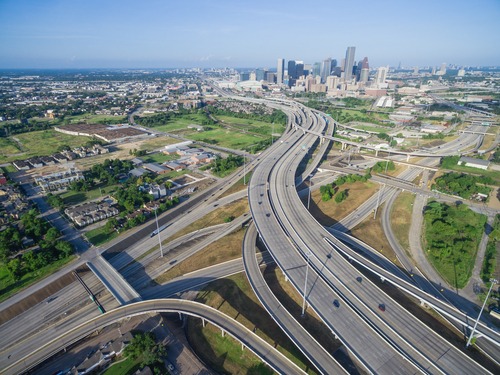
Getting the next infrastructure investment plan passed and paid for will not only mean bringing together both parties to work in a bipartisan fashion, but using private capital in innovative ways, a panel of experts said earlier this month.
The Bipartisan Policy Center hosted a virtual forum on “How Private Investment Supports Smarter, Cleaner, Faster Infrastructure.” Featured speakers included John Delaney, former Democratic U.S. Representative for Maryland and Bipartisan Policy Center board member; Eric Cantor, vice chairman and managing director at Moelis & Company and former Republican House Majority Leader; and Jane Garvey, former head of the Federal Aviation Administration and current North America Chairman for Meridiam.
All of the panelists agreed that neither President Joe Biden’s $2.3 trillion American Jobs Plan nor infrastructure counterproposals offered by Republicans would prevail, but that a compromise somewhere in the middle would have to be struck.
Just what that package would look like – from what it would cover, to how much it would cost, to how it would be paid for – is still up in the air, however, the panelists said.
“Infrastructure, like beauty, is in the eye of the beholder,” Delaney said. “I hope the bipartisan nature of the subject matter of infrastructure is what prevails in the end … I think we can agree on a narrower definition of infrastructure as the traditional physical infrastructure of roads, bridges, airports and ports. But I think we need to add to that definition broadband. Over the pandemic we’ve seen first-hand why broadband is a critical piece of infrastructure in 21st century America.”
Cantor said that infrastructure could probably be defined as whatever it takes to get 51 votes in the Senate. He felt that the final infrastructure package would probably encompass transportation, energy, communication, education and maybe include some climate resiliency.
Graves said the nature of infrastructure is changing, just as it did prior to the invention of the airplane. Where once including airports into infrastructure was once unthinkable, it is now unthinkable to imagine infrastructure without airports, she said.
As to the size of the package, the experts differed on what the package should include.
Cantor said any package that included climate resiliency, but didn’t give thought to existing fossil fuel-based systems would probably not get Republican support.
“If it were up to the Republican party, I don’t think you’d see (clean energy technology) driving the bill. It would be much more appropriate for Republicans to respond to what’s happened with the Colonial Pipeline,” Cantor said. “I think that raises questions about fossil fuels and our economy and where that’s going. If you’re tilting more toward the clean energy piece and not worried about increasing the resiliency of the carbon fuels systems, I think you’re going to lose some support on the Republican side.”
But in the airline industry, Garvey said, clean energy and resiliency are a central question to the future of the industry.
“Every airline I know is putting a focus on climate change and resiliency,” she said. “Ten years ago, you rarely heard those questions, but now their investors are asking them what are you doing around climate? What are you doing around sustainability?”
Congress should not be looking at the price tag, Delaney said, but what the money in the package is going toward.
“I think to bridge this gap … we’ve got to get back to what’s in the numbers,” he said. “Because not every dollar of government spending is the same. Some government spending dollars produce huge economic multipliers, some don’t. Some government spending dollars go against things that only the government can do … some don’t. Other government spending dollars are displacing private capital and competing against private capital. Think what these negotiations will get back to is what has the highest return on investment, what is essential for the government to do and what can most effectively leverage private capital.”
In order to pay for whatever is included in the infrastructure package, whatever size it ends up being, user fees and corporate tax increases are not the only solutions, the panel said.
Delaney and Cantor agreed that a large amount of private capital is available to leverage by the federal government in order to pay for infrastructure, but that there are barriers and risks that need to be addressed first. All three of the panelists said that innovative solutions leveraging private debt and capital could help pay for infrastructure needs now and in the future.